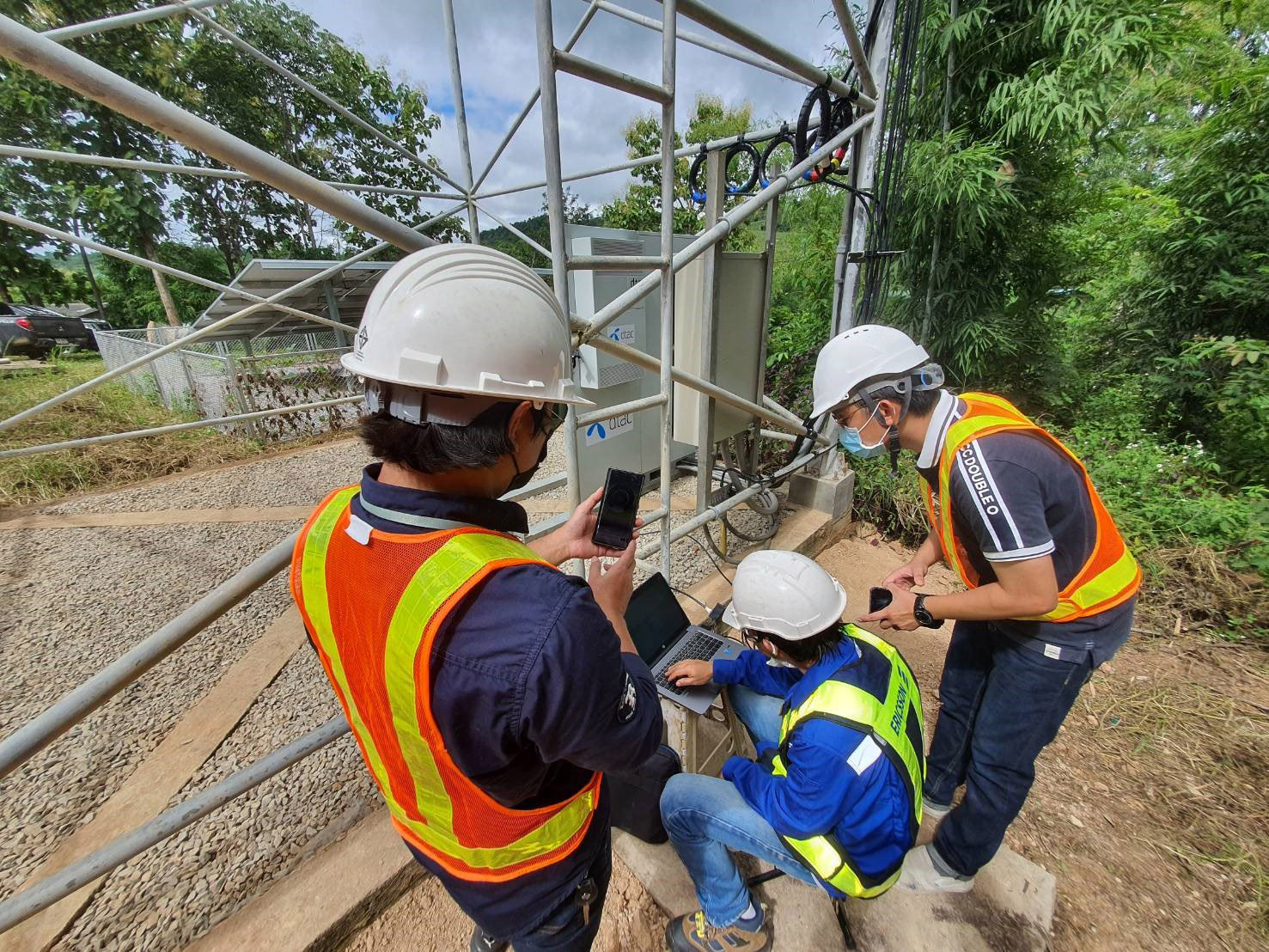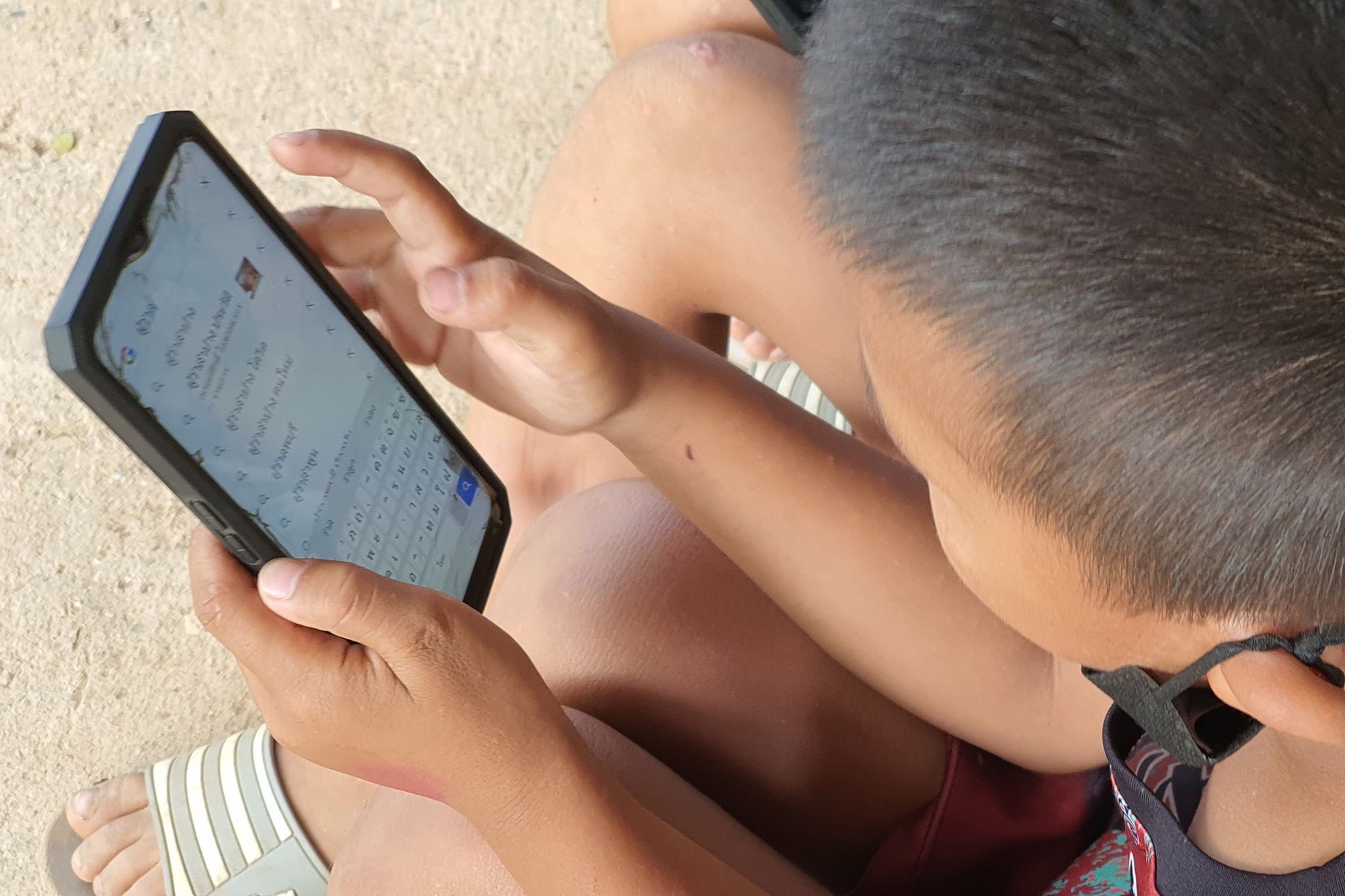Lack of connectivity in Ban Mai Samakki Village became unbearable with COVID-19. Then dtac stepped in.
The Ban Mai Samakki community was established in 2003 in Thailand’s Northern province of Lampang. But until September 2021, it had neither landline nor cell phone coverage. As COVID-19 accelerated digital transformation in Thailand, the community’s lack of connectivity turned into a full-blown crisis. With schools closed, children walked two kilometers every day to catch the nearest mobile signal and connect with their teachers online. The threat of being unable to make an emergency call without making a 40-min hike also became increasingly risky in the midst of a pandemic.

Supud Rala, is the village headman of Ban Mai Samakki, a community of 495 persons, most of them maize farmers. “We sell our crops while raising chicken and pigs for our own consumption. Women also make additional income from handcrafted bags, scarves, and skirts. All our water comes from the river, wells and rainwater. We didn’t even have electricity until 2016,” he said.
Communication is a key issue in this community, rendering it virtually cut off from the outside world. The closest mobile phone signal can be found on a ridge about 2 km from the village, via a forest that can only be crossed by foot.

Mr. Supud said, “One of the worst things that hit the community was in September 2016 when someone in our community needed to make a mobile phone call up in the forest. Unfortunately, he was bitten by mosquitoes that brought dengue fever and which spread throughout the community infecting young and old. The whole community hospitalized for a week. That’s the price we paid for that one phone call.”
Another epidemic, COVID-19, has since prompted lockdowns in many regions of Thailand and resulted in children studying online.
“Every day, our students would walk up to the ridge to find a mobile signal to be able to learn online during the lockdown. The kids from grade 3 and up are physically able to do that, but not the smaller children. And it doesn’t just affect children. We can hardly keep up with the news and often miss out on government assistance.”

For example, signing up for the government’s 50-50 co-payment scheme requires sending an SMS to request a one-time password (OTP). These schemes are often fully subscribed in a matter of hours.
When dtac’s rollout teams became aware of the village’s plight, they expedited the deployment of high-speed internet for the community using 700 MHz and 2100 MHz networks within two weeks.
Sharad Mehrotra, CEO of Total Access Communication PLC or dtac, said, “We’re very proud to be the first operator to connect Ban Mai Samakki to voice and data services. We believe that the children will hugely benefit from learning online while the adults will benefit from more economic opportunities. They also gain the ability to contact emergency services instantly. Access to the internet unlocks the community’s potential and opens it up to the world with digital inclusion.”

Mr. Supud said, “This is what we villagers have been waiting for since we founded this community 18 years ago. We can finally regain opportunities that were lost. We can connect to the outside world and to our grown-up children who have left the village. We can now use the internet to make transactions and no longer have to see schoolchildren risking their safety to find phone coverage for online learning. This change transforms our quality of life.”
dtac’s network expansion is focused on digital inclusion by delivering high-speed internet for the many.




